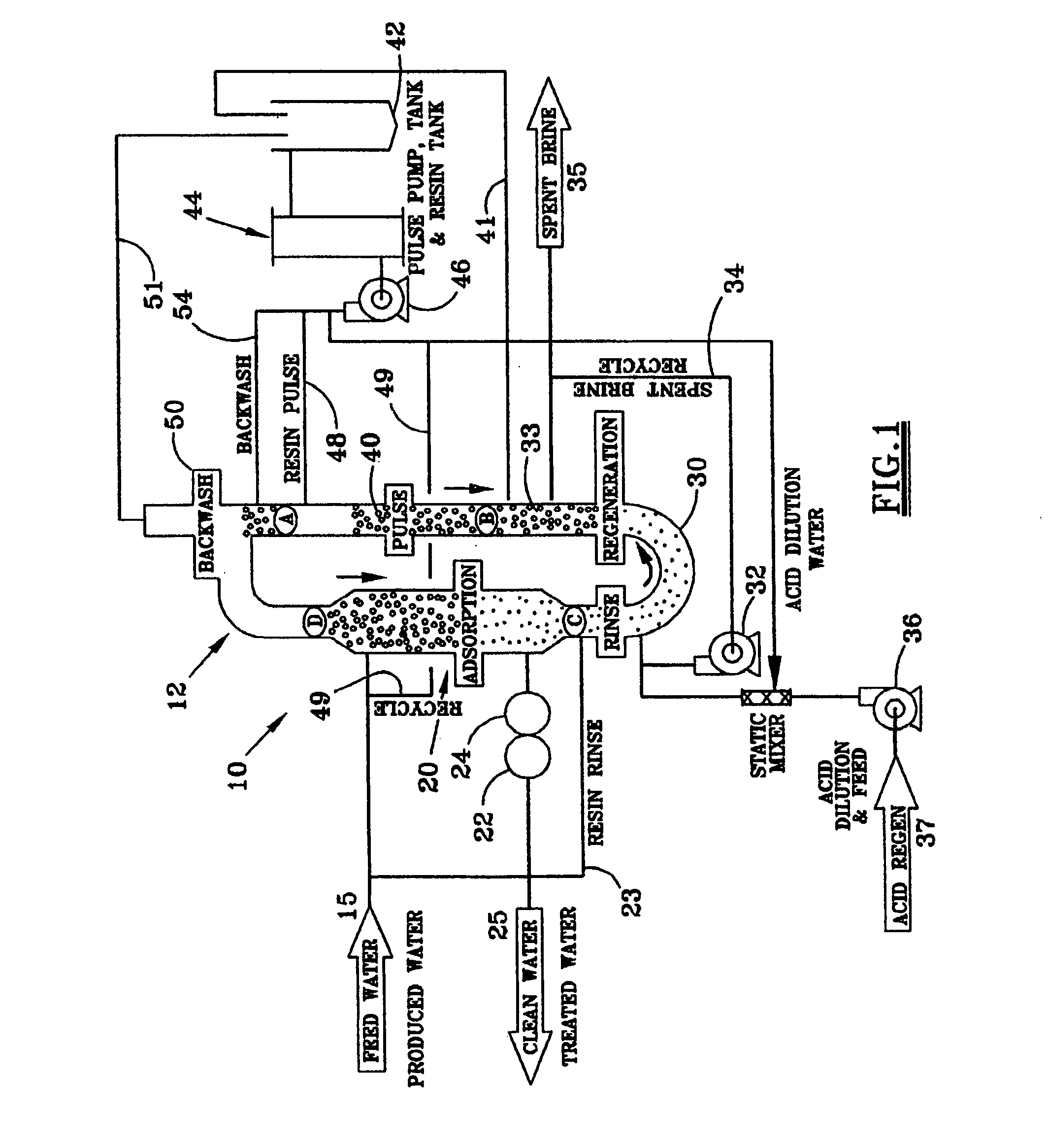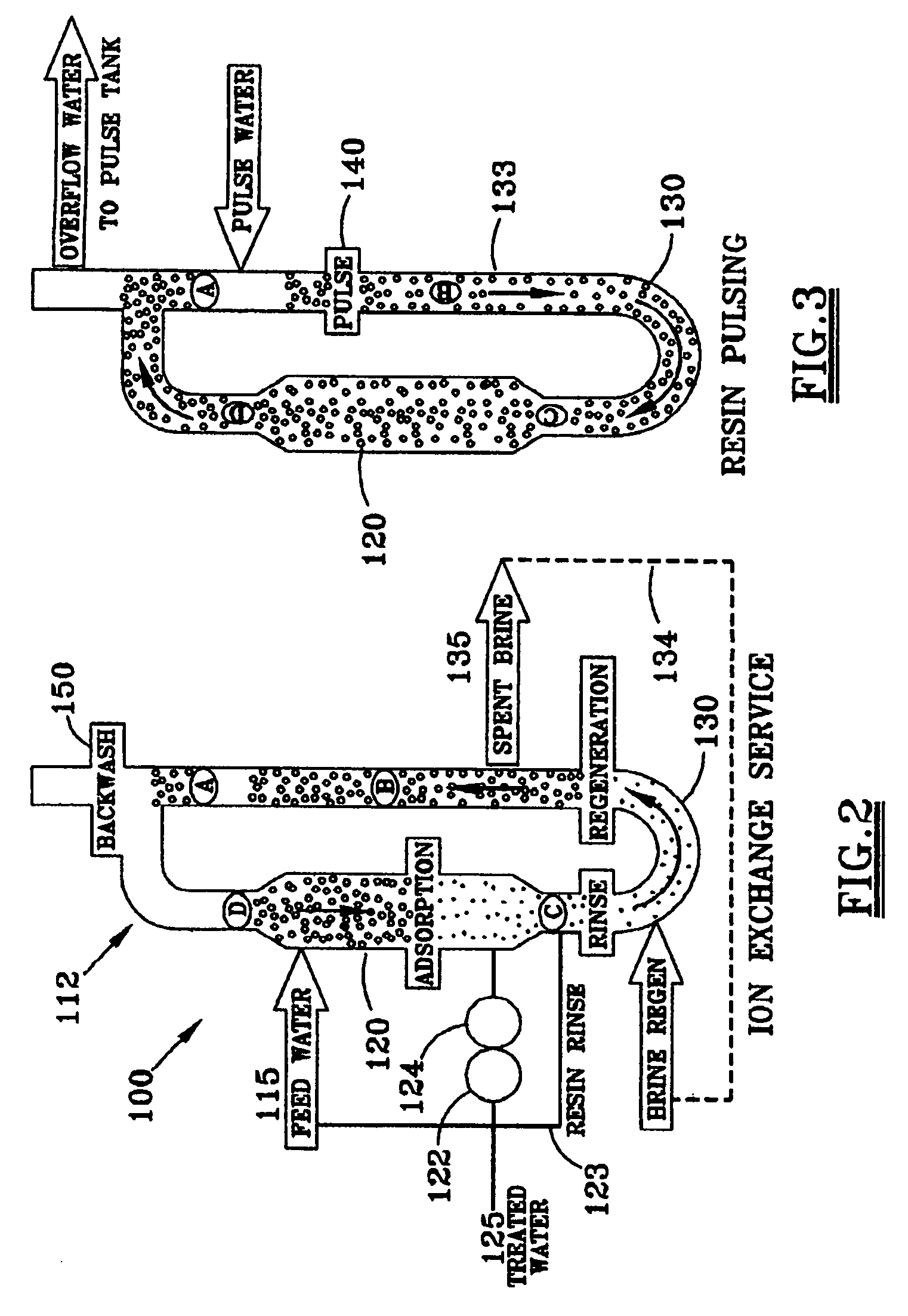Process for continuous ion exchange
a technology of countercurrent ion exchange and process, which is applied in the direction of moving filter element filter, separation process, filtration separation, etc., can solve the problem of significant amount of environmental waste generated
- Summary
- Abstract
- Description
- Claims
- Application Information
AI Technical Summary
Benefits of technology
Problems solved by technology
Method used
Image
Examples
Embodiment Construction
[0034]The process and apparatus for continuous ion exchange of the present invention is environmentally efficient in that it removes contaminants from liquid solutions, waste waters for example, while significantly reducing or eliminating the waste streams typically resulting from the process. Recycling the spent brine stream, water and acids used in the process reduces or eliminates the volume of effluent waste streams, and in some cases, turned them into useable end products.
[0035]Referring to the FIG. 1, a contaminated feed stream 15 is piped to a Higgins Loop™ closed loop contactor 12. The feed stream can comprise any solution having ions that need to be removed from the solution, metals such as sodium or potassium for example, either because of environmental concerns or for purposes of concentrating the remaining ions in the stream. The various embodiments of this invention can encompass metal or ion extraction from such processes as ore leach or wastewater demineralization. Th...
PUM
| Property | Measurement | Unit |
|---|---|---|
| density | aaaaa | aaaaa |
| density | aaaaa | aaaaa |
| adsorption | aaaaa | aaaaa |
Abstract
Description
Claims
Application Information
 Login to View More
Login to View More - R&D
- Intellectual Property
- Life Sciences
- Materials
- Tech Scout
- Unparalleled Data Quality
- Higher Quality Content
- 60% Fewer Hallucinations
Browse by: Latest US Patents, China's latest patents, Technical Efficacy Thesaurus, Application Domain, Technology Topic, Popular Technical Reports.
© 2025 PatSnap. All rights reserved.Legal|Privacy policy|Modern Slavery Act Transparency Statement|Sitemap|About US| Contact US: help@patsnap.com



